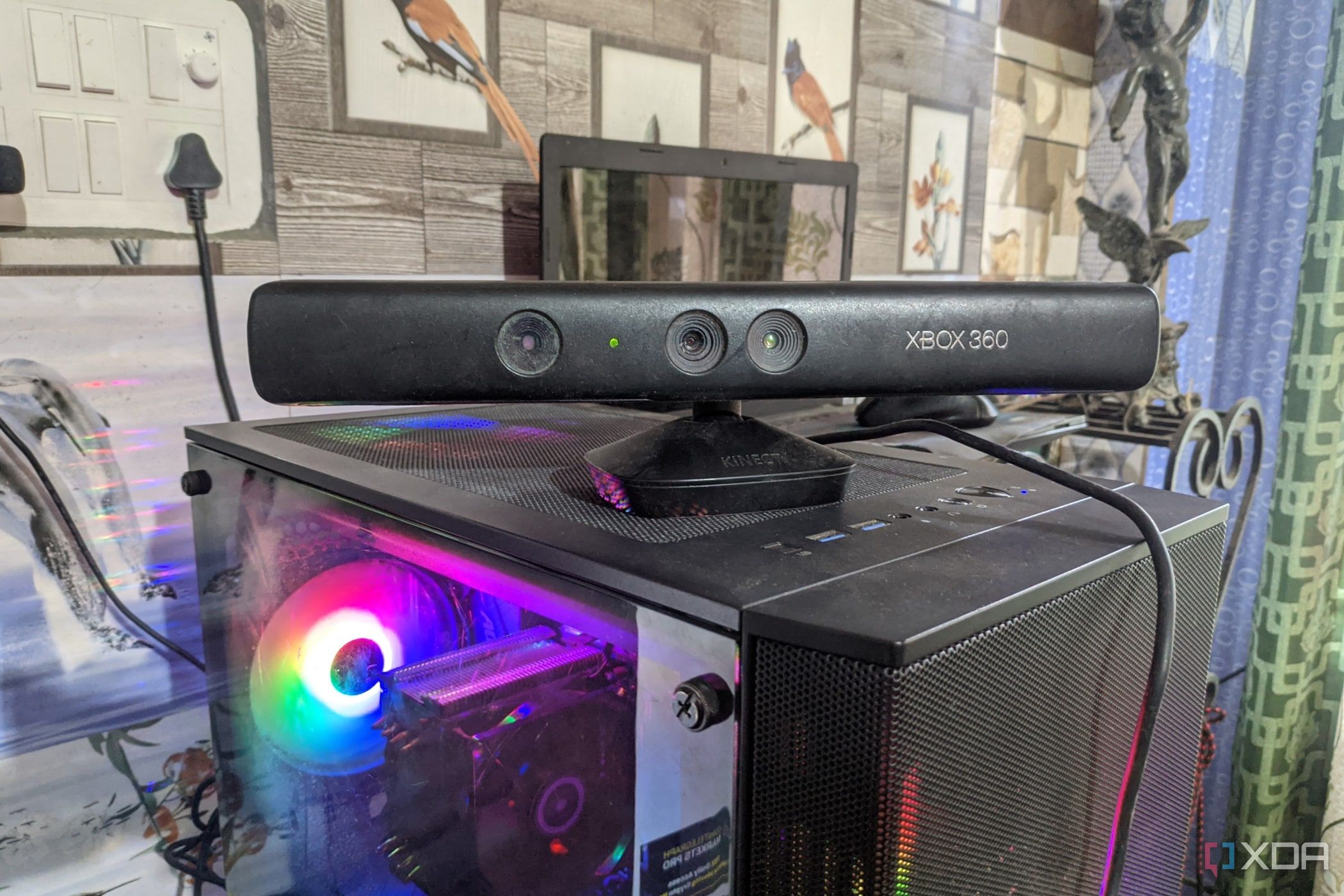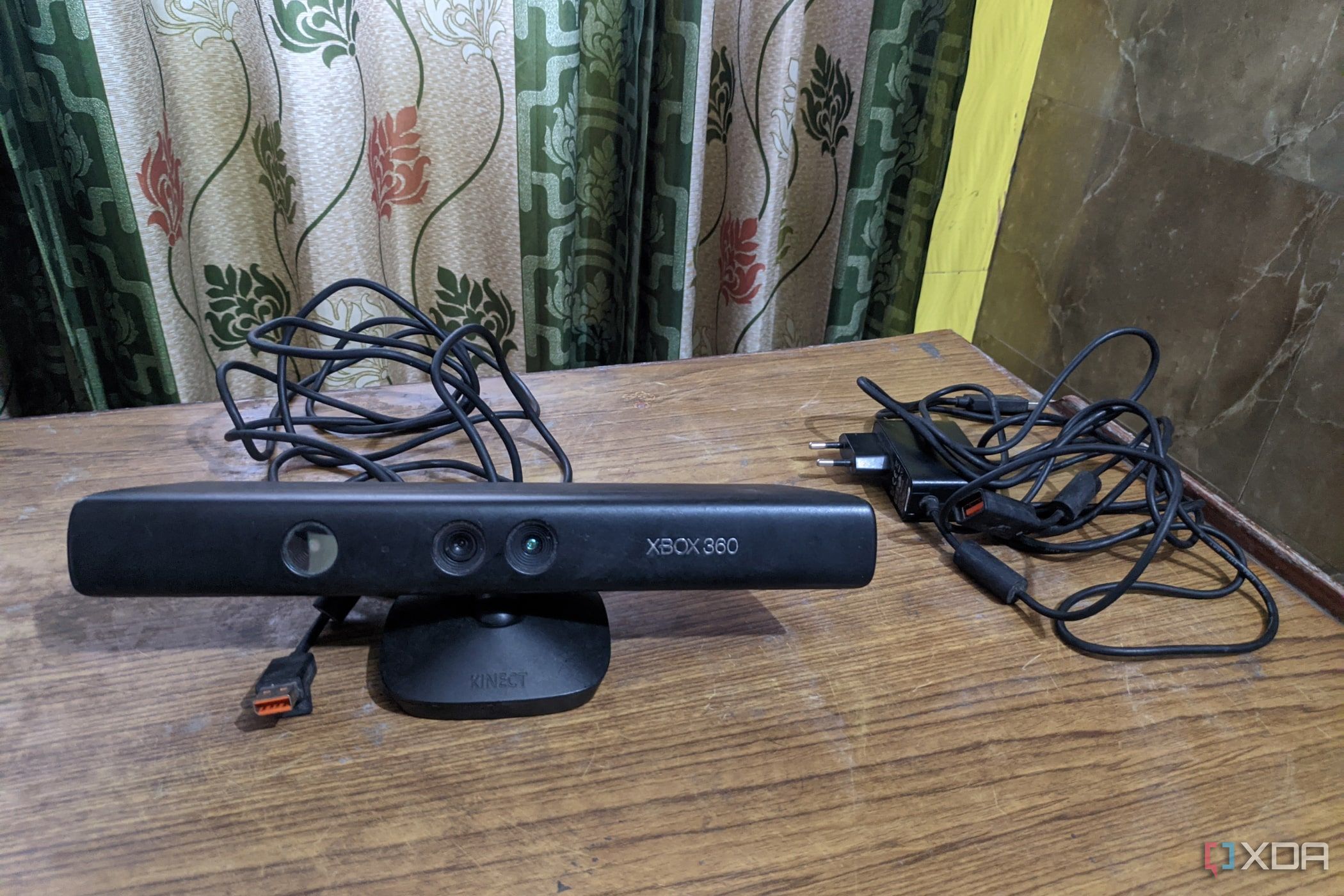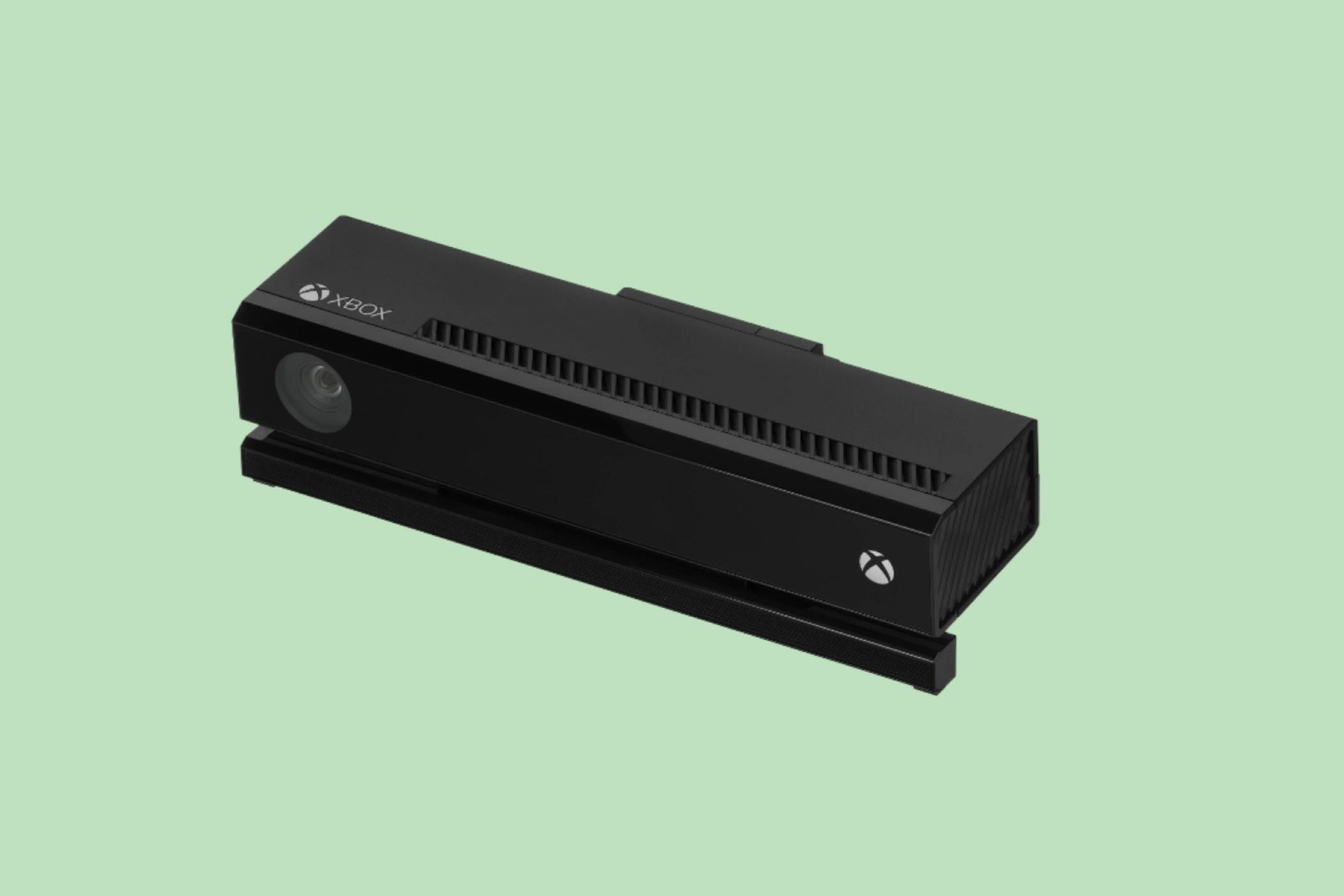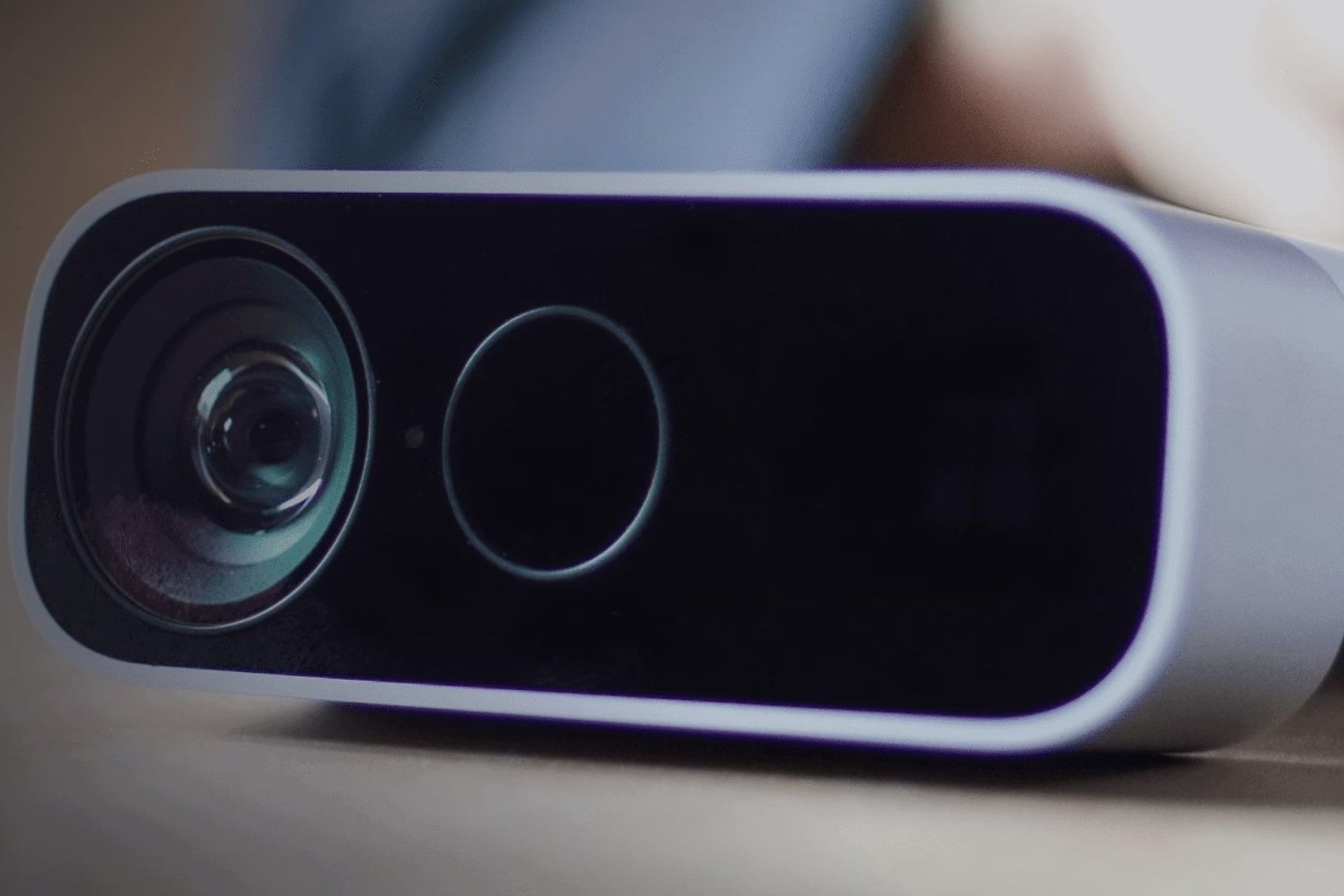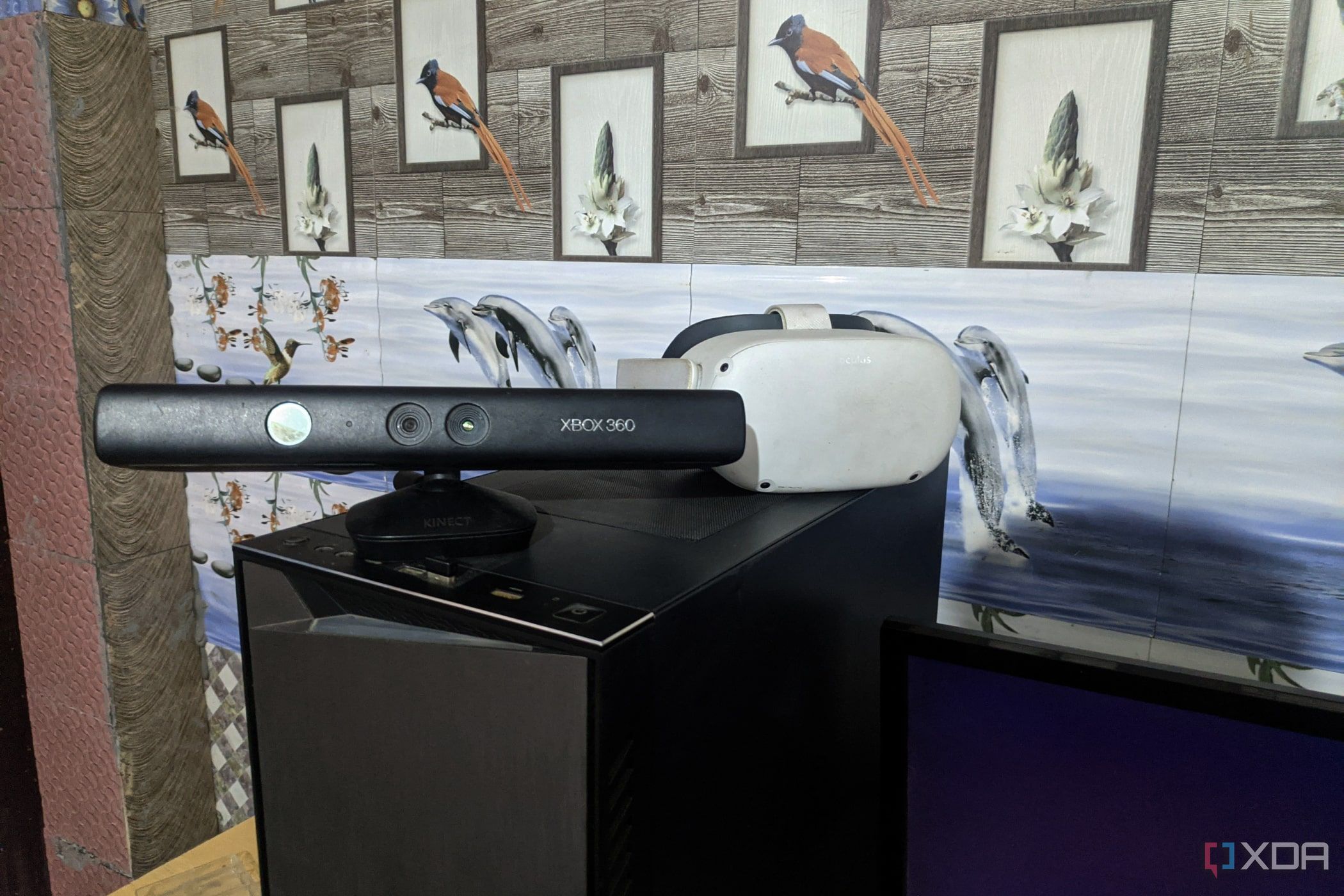Key Takeaways
- The Kinect started off with groundbreaking features and was successful at its launch, but ultimately became known for its gimmicky nature.
- The Kinect saw more use cases in academic and professional fields than it did in gaming, despite efforts to integrate it into the Xbox One.
- Microsoft phased out the Kinect due to backlash from gamers and a lack of demand, ultimately discontinuing it in 2018 after releasing the Azure Kinect Developer Kit.
Back when it was announced in 2009, Microsoft’s Kinect sensor for the Xbox 360 seemed like a worthy rival to Sony’s Move controller and the Wii Remote. Unlike its competitors, Kinect wasn’t just a game controller that could sense your wrist movements; it was a full-blown camera with infrared sensors that was capable of capturing the movements of your entire body. This would enable all kinds of cool ways to interact with games.
Fast-forward 14 years, and the Kinect is only remembered as a colossal failure despite its extremely successful start. But what went wrong?
Its successful launch couldn’t hide its gimmicky nature
The first version of the Kinect was launched in 2010 and won the Guinness World Record for the fastest-selling gaming accessory thanks in no small part to its groundbreaking features. As mentioned earlier, the Kinect was capable of full-body tracking as well as facial and voice recognition, truly an innovation at the time of its release.
Like any first-generation product, the Kinect had its fair share of problems. For one, you needed to be at least 6 feet away from the Kinect for its sensor to work properly. Secondly, there weren't many AAA games released on the Kinect because most players favored the preciseness of the Xbox 360 controller over the rather finicky controls of a motion-sensing camera. Sure, some games like Forza Horizon and Mass Effect 3 added support for the Kinect, but the limited voice control facility wasn't worth $150. As a result, the Kinect landscape became dominated by a few dance and sports games, causing the average user to realize the accessory's gimmicky nature.
A PC release that barely attracted gamers
With its initial success for regular consumers, hobbyists wanted to test using the motion-sensing functionality of the Kinect camera for academic purposes. Unfortunately, the original Kinect couldn’t be used with a Windows system without any tweaks due to its USB connector, which required an Xbox 360 to power the camera, something that wasn’t possible on the PC unless you modded the hardware of your Kinect.
Although Microsoft was initially against users modding the Kinect to work on any platform besides the Xbox 360, the company changed its stance around November 2010. The following year, Microsoft released the official Kinect SDK for Windows, which made pairing a Kinect camera with PCs a breeze thanks to cheap USB adapters that began flooding the market. Soon, developers across the globe began using the SDK, and for a brief time, the Kinect saw use cases in almost every field... except gaming. Apart from a handful of Kinect mods for popular games like Skyrim, there weren't many ways you could use it as a gaming accessory for the PC.
A year went by, and it was time for Microsoft to announce its next big product, the Xbox One. The company planned to make the Kinect even more integrated into its eighth-generation console, and this is when things went horribly wrong for the device…
Microsoft tried to force its adoption...
Unfortunately, the Xbox One Kinect was doomed to fail even before its launch. When Microsoft announced the new console, it doubled down on its efforts to popularize the Kinect. First, Microsoft bundled the newer version of the Kinect with every Xbox One unit, causing the console's launch price to hit $500. Meanwhile, Sony's PlayStation 4 was $100 cheaper and more powerful than its Microsoft counterpart, making it a better value proposition for users.
Heck, during the console’s reveal event on May 21, 2013, Microsoft claimed the camera had to be plugged in at all times for the Xbox One to function. According to Microsoft, the always-on requirement for the Kinect would allow users to get accustomed to its (rather confusing) voice and gesture commands, allowing users to open apps and games, or even partake in Skype calls through the console. By this time, users realized that Kinect's IR sensor would track their actions all the time. On top of that, the microphone supported a voice command to turn on your Xbox One, meaning it would listen for input even when the Xbox One was powered off. As a result, rumors of the Kinect spying on users began to go rampant, causing a lot of unrest within the gaming community.
But the woes of Xbox One users don't end there because Microsoft had implemented a strict DRM policy for the Xbox One and mandated users to keep their consoles connected to the Internet, Moreover, gamers had to go online every 24 hours for DRM checks, and missing a daily check-in meant their games would get blocklisted. Pair these issues with Microsoft highlighting it had no plans to make the Xbox One backwards-compatible with previous-gen games, and the console received an onslaught of backlash from the Xbox community, forcing the company to go back on many of its decisions. However, Microsoft continued to bundle the Kinect with the Xbox One for a few months after the console’s launch. It took the company seven months to finally change its tune.
... And then began to phase it out
By March 2014, Microsoft ditched the Kinect and began selling the Xbox One console for $400. The unbundled Kinect started selling as a separate peripheral with a price tag of $150. By 2017, the firm went completely dark on the state of Kinect for the mid-generation hardware refresh. The newer Xbox Series S and Series X consoles shipped without a dedicated Kinect port, though you could use a free adapter to play the few Xbox One games compatible with the motion-sensing camera. Microsoft also released the Kinect V2 on Windows but ended up discontinuing it in April 2015 due to a severe lack of manufacturing demand from the PC community.
In 2017, Microsoft announced its plans to discontinue the Kinect and by 2018, ceased producing new adapters. But this still wasn’t the end of the Kinect, because the poor camera had to suffer yet another painful demise.
Lackluster reception for the Azure Kinect Developer Kit
By 2019, Microsoft had abandoned all plans to make the Kinect more accessible to gamers and decided to cater to the business community instead. The company’s new venture involved releasing a newer version of Kinect with the Azure Developer Kit. Priced at $400, “Project Kinect for Azure” leveraged the Azure cloud service to improve the Kinect’s depth-sensing capabilities.
Sadly, the last Kinect refresh suffered the same fate as its predecessors, with Microsoft putting the final nail to the Kinect's coffin by discontinuing the Azure Kinect Developer Kit in August 2023. In the words of Microsoft executive Swati Mehta,
"We have made the decision to end production of Azure Kinect Developer Kit, but this is far from the end of this technology as it will continue to be available through our partner ecosystem."
Adding insult to injury, Microsoft has licensed its pixel and sensor technologies to third-party partners, trivializing the need for the Kinect as developers and corporations can now leverage more powerful depth-sensing cameras.
What can you do with a Kinect in 2023?
In 2010, Kinect was a huge, innovative piece of technology. But 13 years down the line, there’s really no reason to go out of your way to purchase one. I bought an Xbox 360 version of the Kinect camera when Microsoft discontinued the Kinect V2 in 2017, and I’ve only used it a handful of times.
If you have a Kinect camera lying around, you can use it to create 3D scans of real-life objects, though you shouldn’t expect high-quality scans from a decade-old camera. You can also use the Kinect as a Windows Hello-compatible webcam, but you'd want to use the V2 version for better accuracy. You can also use it to add full body tracking capabilities for a VR headset, but even that involves a lot of trial and error on your part.
That being said, the Kinect had plenty of pros to balance its cons, and it could've been a lot more successful had it received proper support from Microsoft. Phil Spencer, head of Xbox, said the Kinect made plenty of key contributions to the gaming industry, including making games more accessible to people with disabilities. The camera was also extensively used in hobbyist projects and robotics in its early days. Unfortunately, the Kinect was unable to hit its full potential and became yet another failure in the tech industry.

